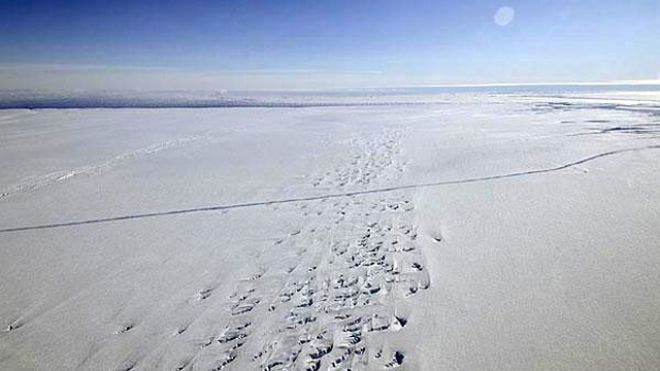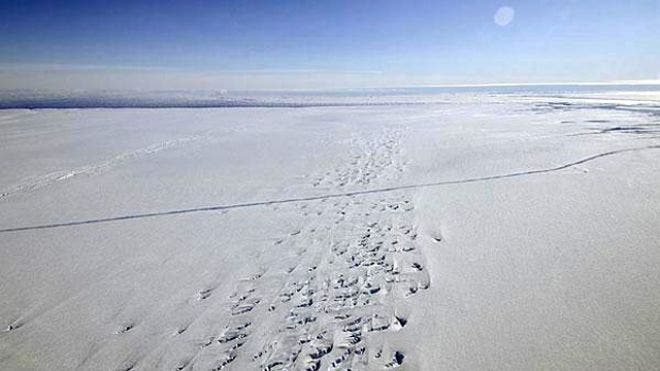
Part of an ambitious NASA survey over the Antarctic, which intends on 3D mapping the continent’s glaciers in detail, one of the project’s planes has sighted a huge, emerging crack on the icy surface. The crack is a 8-mile-long break in an ice shelf, the first sign hinting to the formation of an iceberg that will be end up to be larger than New York City.
“We are actually now witnessing how it happens,” Michael Studinger, project scientist with NASA’s IceBridge survey, said in a statement Wednesday. “It’s part of a natural process but it’s pretty exciting to be here and actually observe it while it happens.”
NASA’s Operation Ice Bridge, the largest airborne survey of Earth’s polar ice ever flown, is in the midst of its third field campaign from Punta Arenas, Chile. The scientists were aboard a NASA jet on Oct. 14, making measurements of Pine Island Glacier (PIG) and its ice shelf, when they came across the crack.
The glaciers of the Antarctic, and Greenland, Ice Sheets, commonly birth icebergs that break off from the main ice streams where they flow in to the sea, in a process called calving. In recent years, satellite and airborne measurements have recorded a marked thinning of the PIG, which may be related to climate changes. The tongue of ice, however, last last calved a significant iceberg in 2001, which would make it quite natural for it to happen again around this time, as part of its natural cycle.
The team estimated the ice might finally break away from the shelf “in the coming months” now that the Southern Hemisphere is entering its summer. Although the crack may be about 60-100m deep to the water surface, the entire ice volume may extend down to a depth of around 500m
“When the iceberg breaks free it will cover about 340 square miles of surface area,” NASA stated. By contrast, New York City comes in at 302 square miles.
That may seem a lot, however it’s not even close to being a record. A lot of icebergs have been measured at thousands of square miles, while the record was set by a 12,000-square-mile behemoth spotted in 1956.









